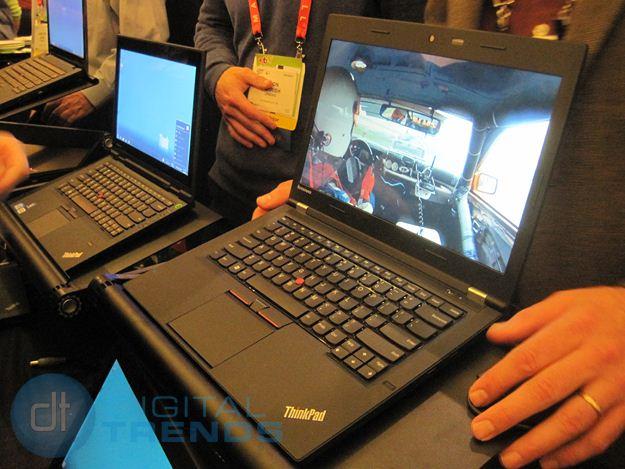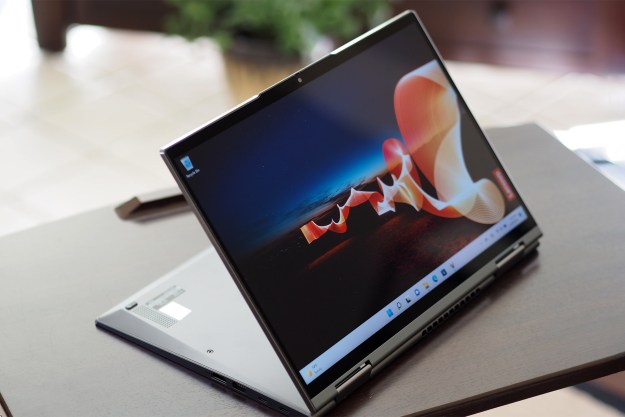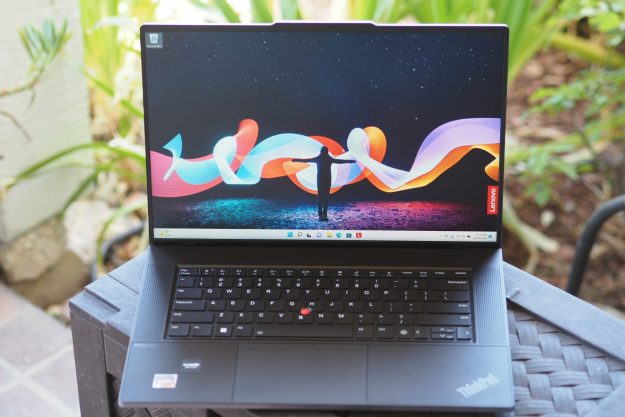
Lenovo already showed off its Lenovo ThinkPad X1 Hybrid last week, but tonight at CES Unveiled, we had a chance to check out the new dual-OS laptop in person. While we did bump into a few unexpected quirks of balancing two operating systems and processors in one machine, the concept does show promise for users hell bent on wringing every minute of battery life possible from their notebooks.
As the hybrid name implies, the new X1 runs both Windows 7 using a conventional Intel Core i-series processor, and a “customized version of Linux” on a Qualcomm 8060 ARM CPU – basically the same type of chip found in phones like the Samsung Galaxy S II. It’s essentially a Frankenstein laptop with the beating heart of a smartphone beating beside a stronger Intel ticker. When users switch over to the less powerful chip in “Instant Media Mode” (IMM), they’re constrained to just a handful of applications: a Web browser, e-mail client, movie player, audio player, photo viewer, and a few more, but with upside of doubling battery life, according to Lenovo. (Officially figures claim it should be able to achieve up to 10 hours in this mode, but that’s with an optional slice battery that adds significant bulk and weight).

Since IMM saves battery life by completely putting the main board to sleep, it basically acts like a smartphone that shares the same display, inputs, battery and some other bits, like a headphone jack. One interesting consequence of this: You can’t actually access the contents of your hard drive. The Qualcomm chip has its own 16GB flash storage module, which you can add files to from Windows, but it’s all you have access to once you flip the switch.
Even with all the chatter about Windows 8’s ability to run on an ARM CPU, Lenovo said the X1 Hybrid may or may not run it – the Qualcomm 8060 CPU inside hasn’t been optimized for Windows 8, so there’s no guarantee. Likewise, despite its Android lineage, there’s no plan to add additional apps for access in Instant Media Mode, so don’t count on using your 10 hours of extended battery life to play Angry Birds on the way to Tokyo.
Considering it will sell for $1,600 when it launches in the second quarter, the X1 Hybrid makes for one spendy experiment in cross-breeding. Still, for serious frequent fliers who log entire days without the chance to power up, it might be just the fix.
Editors' Recommendations
- One of Lenovo’s best-selling ThinkPad laptops is 45% off today
- Best Lenovo laptop deals: Save on Yoga and ThinkPad laptops
- The best Lenovo laptops for 2023: ThinkPad, Yoga, and more
- The premium ThinkPad that outdoes the X1 Carbon in almost every way
- The ThinkPad X1 Carbon Gen 11 is both faster and longer-lasting


